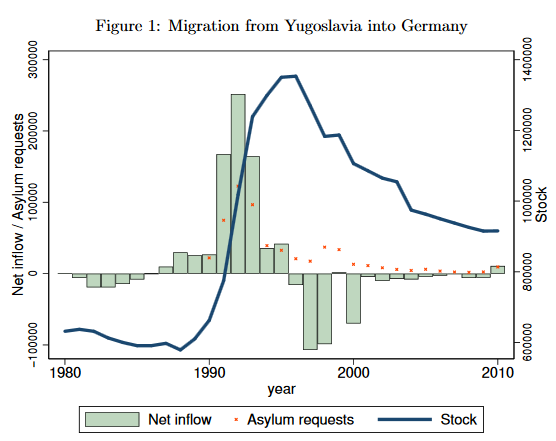RPROD is a global database that complements EQCHANGE, by providing additional measures of the Balassa-Samuelson effect. It includes five measures of this effect based on: the relative GDP per capita, the relative labor productivity, the relative consumer-price-to-producer-price ratio, and two relative sectoral value-added deflators. These measures are provided for a wide range of countries (up to 182 economies, depending on the considered indicator), spanning from 1973 to 2018 and using several weighting schemes associated with each country's main trading partners.This guidance note outlines the construction and contents of RPROD. This new database developed by CEPII complements the EQCHANGE database, by providing additional measures of the Balassa-Samuelson effect. RPROD delivers the following indicators computed for each country included in the database, and relative to its main trading partners: (i) GDP per capita, (ii) labor productivity, (iii) consumer-price-to-producer-price ratio, (iv) three-sectors' value-added deflator, and (v) six-sectors' value-added deflator. These different measures are publicly available (http://www.cepii.fr/CEPII/fr/bdd_modele/presentation.asp?id=34), with the aim to contribute to the investigation of the Balassa-Samuelson hypothesis, and to the comparison of estimated equilibrium real exchange rates and currency misalignments across alternative proxies of this effect. Cécile Couharde, Anne-Laure Delatte, Carl Grekou, Valérie Mignon & Florian Morvillier >>> |
- Europe in the Sino-American Trade War
Cecilia Bellora
- Migration and Post-Conflict Reconstruction: The Effect of Returning Refugees on Export Performance in the Former Yugoslavia
Dany Bahar, Andreas Hauptmann, Cem Özgüzel, Hillel Rapoport - Measuring the Balassa-Samuelson Effect: A guidance Note on the RPROD Database
Cécile Couharde, Anne-Laure Delatte, Carl Grekou, Valérie Mignon, Florian Morvillier - The Primary Cause of European Inflation in 1500-1700: Precious Metals or Population? The English Evidence
Anthony Edo, Jacques Melitz
Research seminar "Globalization and international tax competition" by Professor Assaf Razin, Cornell University and Tel Aviv University
November 6, 2019
EconPol Europe Annual Conference 2019 « Europe’s Competitiveness and the Rise of China”, Brussels
November 7 - 8, 2019
Immigration in OECD Countries - 9th Annual International Conference
December 12 - 13, 2019
Theories and Methods in Macroeconomics (T2M) - 24th Conference >> ANNULÉ
March 26 - 27, 2020
During the early 1990s Germany offered temporary protection to over 600,000 Yugoslavian refugees fleeing war. By 2000, many had been repatriated. We exploit this natural experiment to investigate the role of migrants in post-conflict reconstruction in the former Yugoslavia, using exports as outcome. Using confidential social security data to capture intensity of refugee workers to German industries –and exogenous allocation rules for asylum seekers within Germany as instrument– we find an elasticity of exports to return migration between 0.08 to 0.24. Our results are stronger in knowledge-intensive industries and for workers in occupations intensive in analytical and managerial skills. Dany Bahar, Andreas Hauptmann, Cem Özgüzel & Hillel Rapoport >>> |
- Contact us
- Our other sites
 |
ISSN: 1255-7072
Editorial Director : Antoine BouëtManaging Editor : Dominique Pianelli








.png)


